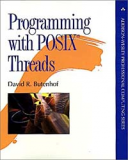Книга: Programming with POSIX® Threads
3.2.5.2 Lock chaining
3.2.5.2 Lock chaining
"Chaining" is a special case of locking hierarchy, where the scope of two locks overlap. With one mutex locked, the code enters a region where another mutex is required. After successfully locking that second mutex, the first is no longer needed, and can be released. This technique can be very valuable in traversing data structures such as trees or linked lists. Instead of locking the entire data structure with a single mutex, and thereby preventing any parallel access, each node or link has a unique mutex. The traversal code would first lock the queue head, or tree root, find the desired node, lock it, and then release the root or queue head mutex.
Because chaining is a special form of hierarchy, the two techniques are compatible, if you apply them carefully. You might use hierarchical locking when balancing or pruning a tree, for example, and chaining when searching for a specific node.
Apply lock chaining with caution, however. It is exceptionally easy to write code that spends most of its time locking and unlocking mutexes that never exhibit any contention, and that is wasted processor time. Use lock chaining only when multiple threads will almost always be active within different parts of the hierarchy.
- Оператор lock
- Exception Chaining
- Ограничение времени ожидания для транзакций (Lock timeout)
- LOCK_MEM_SIZE
- LOCK SIGNAL
- LOCK GRANT ORDER
- LOCK HASH SLOTS
- DEADLOCK TIMEOUT
- LOCK ACQUIRE SPINS
- 15.4.2 Preemption Locks
- Как избежать случайного нажатия клавиши Caps Lock?
- 14.2.2. Блокировка POSIX: fcntl() и lockf()




